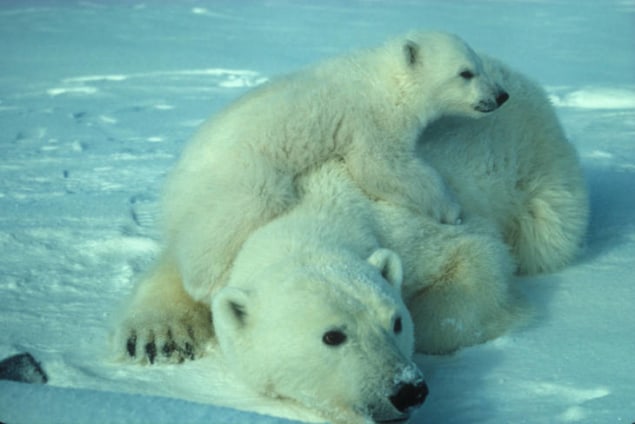
Snow is crucial to survival for Arctic wildlife. But climate change is altering the extent, timing and properties of Arctic snow and little is known about the detail of these changes. Now a team has demonstrated why it’s vital to understand more and recommended an approach to predict the impact on nature.
In November 2013 tens of thousands of reindeer starved to death after a “rain on snow” event in Russia’s Yamal peninsula. Just as the reindeer reached their winter foraging grounds, rain created a layer of ice, preventing the reindeer from scraping away the snow to reach the vegetation beneath. It was a classic case of “the wrong kind of snow” and was hard to detect remotely.
Such events are anticipated to become more frequent as climate changes but our knowledge is limited because it’s tricky to observe them directly. Natalie Boelman from the Lamont-Doherty Earth Observatory at Columbia University, US, and colleagues argue in a paper in Environmental Research Letters (ERL) that we need to get serious about modelling Arctic snow.

Svalbard freezes as Arctic warms
In their paper, the scientists describe three case studies. For polar bears it’s snow drifts that matter. “In the winter the females den up to have their pups – on sea ice or on land – and the main condition is a sufficient accumulation of snow on the lee side of a ridge of a particular size,” says Eliezer Gurarie from the University of Maryland, US.
Meanwhile, Dall sheep, a species endemic to the mountain ranges of Alaska, seek out wind-exposed patches of vegetation along ridge-lines during the depths of winter. Trends of increased winter precipitation may put the sheep at risk, with the snow too deep to have enough of these windblown “holes”.
Finally, caribou in central Canada undertake their massive spring migration a few weeks before snowmelt begins in earnest. They time their arrival at their calving grounds for when the snowmelt is about to start so that “greening up” of the landscape is imminent. Exactly which cues caribou use to determine when to start their journey isn’t known, but it’s likely they take note of snow depth and hardness.
The properties of snow crucial to these animals are not visible in remotely sensed images of the region. Neither are they highlighted in the climate and hydrological models currently in use. This gap in our knowledge has serious implications, both regionally and globally. For example, caribou — and reindeer — are central to subsistence and culture for most of the human populations throughout the Arctic, and recent declines in caribou numbers have hit Arctic peoples hard.
“The more we know, the better we can…consider what we might do to manage the things we can control, like harvest, industrial development and perhaps even more dramatic interventions like translocations, reintroductions and maternity penning,” says Gurarie. Looking at the bigger picture, changes in wildlife affect vegetation, which in turn affects climate. Feedbacks in the Arctic such as increased greening can have surprising knock-on effects in distant locations.
Boelman and colleagues believe that it is time to take Arctic wildlife into account, and to coordinate data collection and modelling.
“If you combine wind data with temperature data and topography you can get more nuance, like the location of the kinds of snow drifts that the polar bears use,” says Gurarie.
The researchers suggest that in situ measurements need to be integrated with airborne and satellite data, and combined with modelling tools to understand the snow variables that are relevant to wildlife. Only then will we be able to anticipate the changes that lie ahead and their impacts on wildlife.



